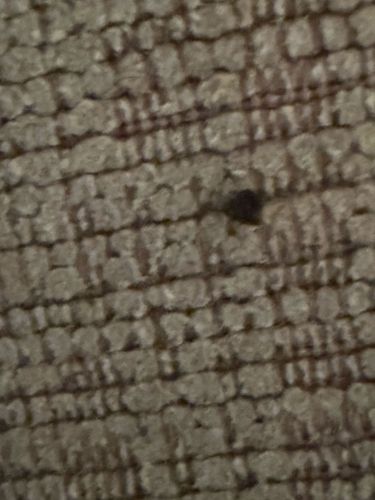Carpet Beetle (likely Black Carpet Beetle larva or a similar species)
Scientific Name: Dermestidae (various species within this family, e.g., Attagenus unicolor)
Order & Family: Coleoptera (Beetles), Dermestidae (Skin Beetles)
Size: Larvae typically 2-6 mm (0.08-0.24 inches) in length, adults 2-5 mm (0.08-0.2 inches) in length.

Natural Habitat
Indoors, especially in undisturbed areas where organic fibers or food sources are present. These include carpets, rugs, upholstered furniture, clothing, pantry areas, and animal product storage.
Diet & Feeding
Larvae feed on a wide range of animal and plant products, including wool, silk, feathers, fur, leather, dead insects, pet food, cereals, and dried goods. Adults primarily feed on pollen and nectar outdoors but can also be found indoors.
Behavior Patterns
Carpet beetle larvae are typically found crawling slowly in dark, undisturbed areas. They are known to shed their skins multiple times, and these shed skins can be a sign of infestation. Adults are attracted to light and are often found near windows. Their life cycle includes egg, larva, pupa, and adult stages, with the larval stage being the most destructive.
Risks & Benefits
Risks: Can cause significant damage to household items made of natural fibers, such as carpets, clothing, and upholstered furniture. They are considered household pests and can contaminate food products. Some people may also experience allergic reactions to the bristles of the larvae or their shed skins. Benefits: In nature, they play a role in decomposition, feeding on carrion and dried organic matter.
Identified on: 9/27/2025